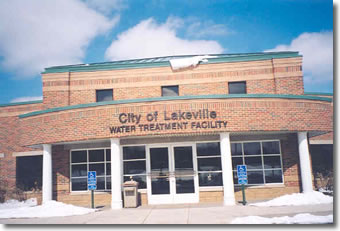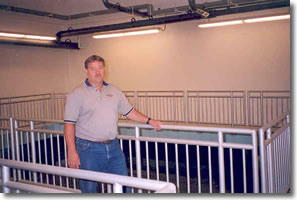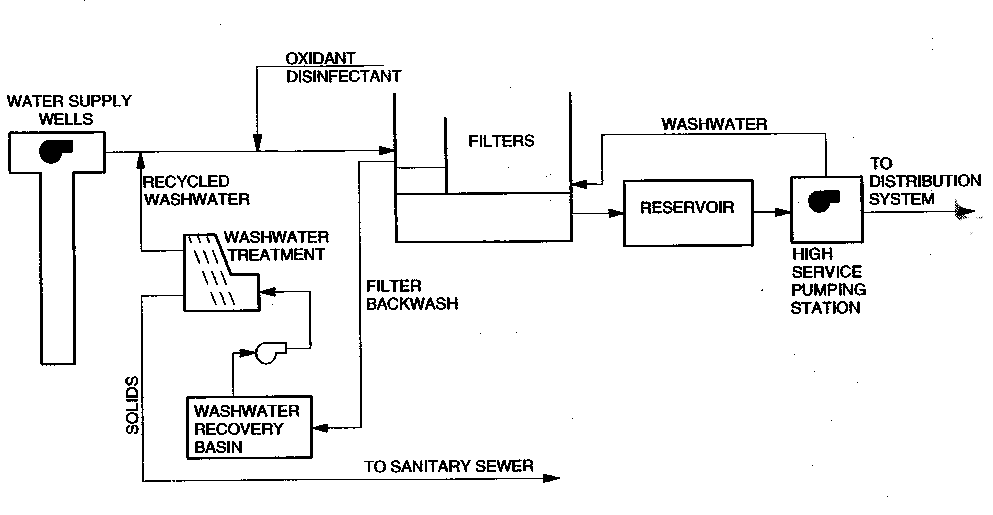Drinking Water Protection
- Drinking Water Protection Home
- About Us
- A-Z Index of Contaminants in Water
- Community Public Water Supply
- Drinking Water Grants and Loans
- Drinking Water Institute
- Drinking Water in Schools and Child Cares
- Drinking Water Revolving Fund
- Laws and Rules
- Noncommunity Public Water Supply
- Source Water Protection
- Water Operator and Certification Training
- Drinking Water Protection Contacts
Related Topics
- Annual Reports
- Drinking Water Risk Communication Toolkit
- Drinking Water Protection External Resources
- Fact Sheets
- Forms
- Invisible Heroes Videos: Minnesota's Drinking Water Providers
- Noncom Notes Newsletter
- Sample Collection Procedures (videos, pictures, written instructions)
- Waterline Newsletter
Related Sites
- 10 States Standards
- Clean Water Fund
- Health Risk Assessment – Guidance Values and Standards for Water
- Minnesota Well Index
- Water and Health
- Wells and Borings
Environmental Health Division
Keeping Up with Growth:
Lakeville Water Plant Expands with Population
From the Spring 2004 Waterline
Quarterly Newsletter of the Minnesota Department of Health Public Water Supply Unit, Waterline
A complete list of feature stories can be found on the Waterline webpage.
 Lakeville, Minnesota, is typical of the outer ring of suburbs in the Minneapolis-St. Paul metropolitan area. As the overall population gets larger, and as people have a desire to live farther out, the suburbs are experiencing a boom in residents that challenges the services that must be delivered to them.
Lakeville, Minnesota, is typical of the outer ring of suburbs in the Minneapolis-St. Paul metropolitan area. As the overall population gets larger, and as people have a desire to live farther out, the suburbs are experiencing a boom in residents that challenges the services that must be delivered to them.
In the past 10 years, Lakeville has not only built its first water treatment plant, it has expanded it once, and it now looks ahead to a further expansion. “The plant was population driven,” says Don Volk, the city’s director of public works. “People moving to Lakeville from Minneapolis and St. Paul were used to good quality water, including water that had been softened.”
Lakeville does biennial surveys of its citizens. In the early 1990s, there were consistent complaints about discoloration of fixtures caused by iron in the water. At the time, Lakeville had no treatment plant. Fluoride and chlorine were added at each well site along with a polyphosphate to sequester iron and manganese. However, iron was still turning up in the finished water.
In 1992, the city council authorized a comprehensive water plan update. Two years later, the design-process approval for a water treatment facility began. This coincided with Volk coming to Lakeville from the city of Lino Lakes. “They ran a pilot plant for three months to test oxidants, media types, and length of filter runs,” said Naeem Qureshi of Progressive Consulting Engineers of Minneapolis. “They got good filter runs with both anthracite/greensand and anthrafill. They decided to go with greensand/anthracite.”
The plan called for a greensand-filtration plant for iron and manganese removal with an initial capacity of 10 million gallons per day (MGD) and the ability to expand, in two separate stages, to 30 MGD. Construction began in 1996, and the original plant went on-line in 1998.
 |
 |
|
Don Volk has been with the city of Lakeville since 1994.
|
A barn on the site has been converted into a storage shed.
|
Sources
Ten wells now provide water to the plant. Six of the wells were already in use before the original plant was built. One well was added shortly after the plant was opened, and two additional wells were added at the time the plant was expanded to 20 MGD in 2001. The newest well was brought on-line in 2003.
Four more wells, which were present before the plant, are now just used for peak demand. Fluoride and chorine are added at the well sites with the water directly entering the distribution system. Volk says that the well field will eventually be expanded to encompass two of these wells and have them feed the plant.
All of the water is from the Prairie du Chien-Jordan aquifer, which is high in iron and manganese. Some of the wells also have radium, although the levels are reduced to acceptable amounts through blending with water from other wells.
Treatment
Pretreatment consists of heavy doses of chlorine to help the iron oxidize before it gets to the filters. Using chlorine rather than air as an oxidant lowers the operation and maintenance costs, according to Volk.
The original plant had four filters. The 2001 expansion to increase the capacity to 20 MGD added four more filters. The water goes from the filters to a clearwell. Water from the clearwell is used to backwash the filters. The backwash water is then routed through a plate settler to remove the highly concentrated iron and manganese. After it settles, the iron and manganese slurry goes to the sanitary sewer with the rest of the water going to a washwater treatment building and then back to the front of the plant. Volk says they reuse about 80 percent of their backwash water.
Before the water is pumped to the system, additional chlorine is added as necessary to maintain a residual. The amount added depends on much was used up in oxidizing the iron and manganese in the pre-treatment state.

A schematic of the Lakeville Water Treatment Plant.
Controls
The original plant included two manual instrument panels as redundancy for the System Control and Data Acquisition (SCADA) system. “In 1996, we weren’t as confident in the reliability of computers so we wanted a backup to not totally rely on computers,” Volk explained. Each manual instrument panel controls two of the filters from the original plant. With more faith in computers, the utility did not install manual controls with the new filters as part of the 2001 expansion.
Performance
Within three months of the opening of the original plant in 1998, complaints about the water dropped to almost none. Volk says that, with the treatment, levels of iron in the finished water are well below .3 parts per million (ppm) and below .05 ppm for manganese. Volk added that they continued their normal biennial water-main flushing for a few years but as a result of the low iron and manganese levels have now discontinued that.
Meeting Future Growth
The plant is designed to be expanded to 30 MGD, and the final expansion may take place in the latter part of this decade. Volk hopes that this expansion, along with water conservation, will take them to full population growth, which is expected to be 97,000 (the city’s population is now approximately 46,000). “Otherwise,” Volk says, “we may need another plant.”
Regarding conservation, in 2004 the city will go to an odd-even sprinkling schedule for its residents. Even though such a program has been voluntary in the past, Volk says compliance has been outstanding.
Another issue that affects conservation is the low water rates, which are based only on operation, not infrastructure, costs. Volk says they are considering a tiered rate structure to discourage excess water usage, although educating the public has been effective to this point. “Lakeville residents respond very well,” he adds.
Added Features
The original project included construction of a maintenance facility for the utility department and renovation of a barn on the site—which had been a farmstead—to use for storage for the city’s police and public works departments. The maintenance facility includes a community meeting room that is used by businesses and community organizations. The room, Volk says, “helps draw attention to what we’re proud of-our water treatment facility.”
Volk has hosted a number of tours of the plant, especially for students. Picture boards around the plant are popular and help illustrate the workings of a public water system. Upgrades in security in the past two-and-a-half years haven’t eliminated the school groups from visiting. If the Homeland Security Threat Level rises from yellow (elevated) to orange (high), they suspend tours. Otherwise, they welcome visitors as usual although they do background checks on the adults.
Costs
The original 10 MGD plant cost $15 million. The 10 MGD expansion in late 2001 was $5.5 million.
Go to > top.